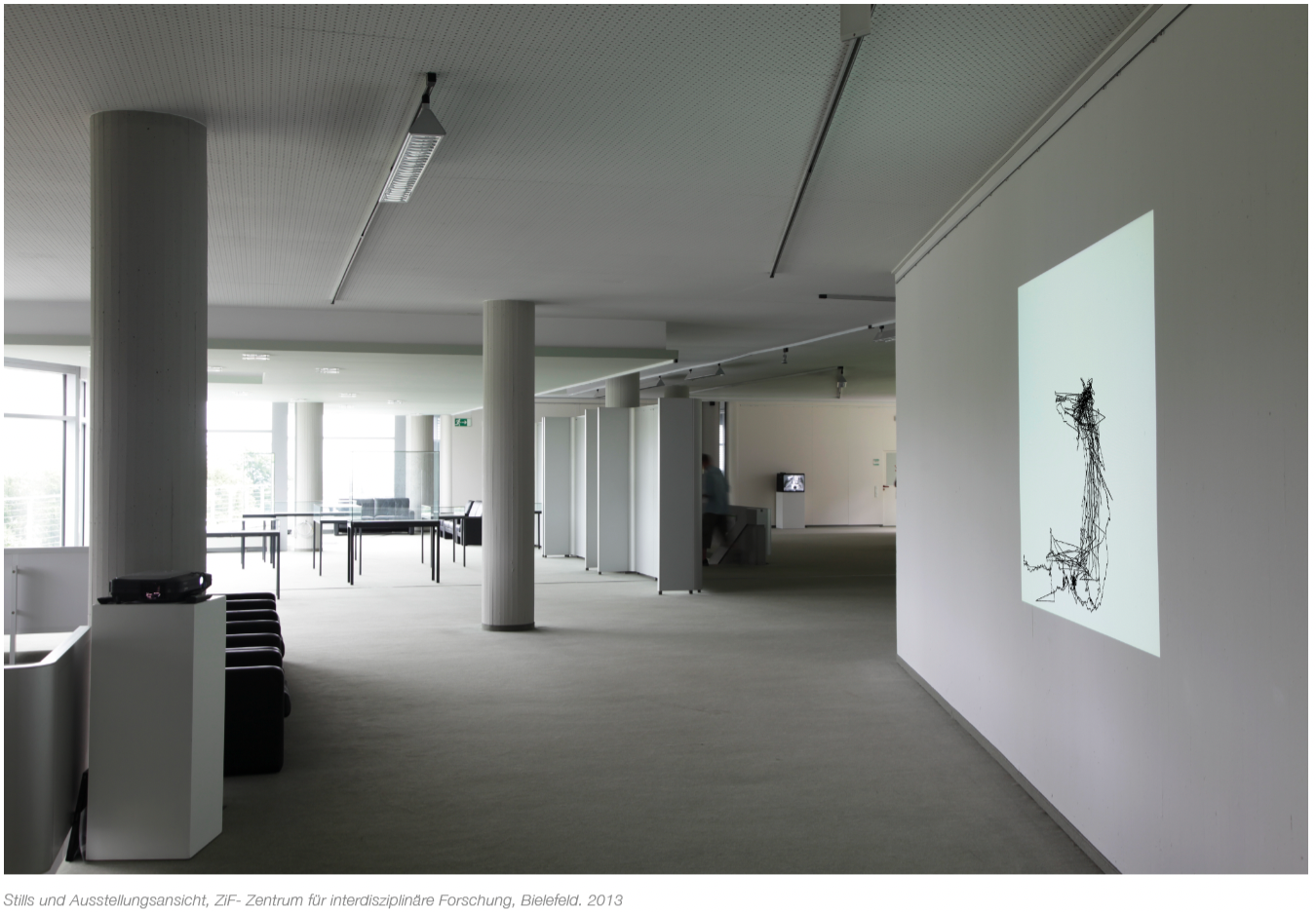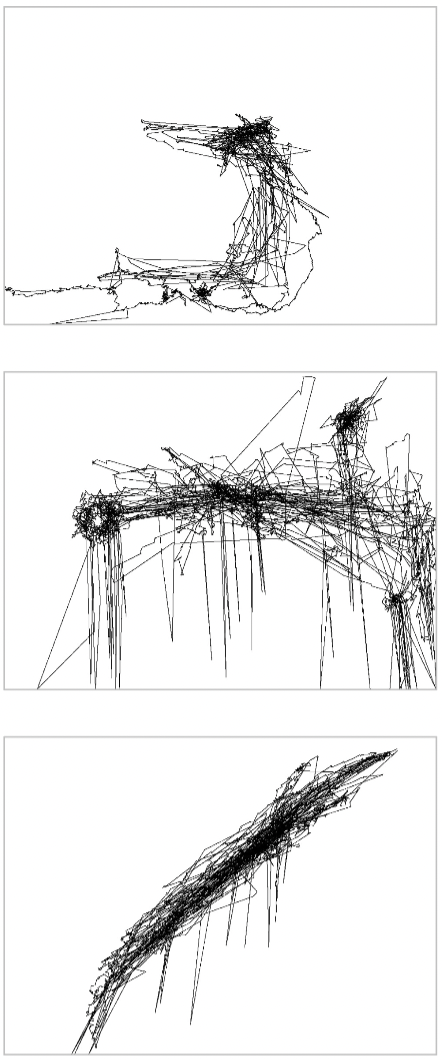Die Künstler Nicole Schuck und Beat Brogle begleiteten während ihres dreimonatigen Artist in Residence Stipendiums die ZiF-Forschungsgruppe „Wettbewerb und Prioritätskontrolle in Geist und Gehirn: Neue Perspektiven aus der Forschung zu Aufmerksamkeit und Sehen“. Sie setzten sich mit den Fellows der Forschungsgruppe und deren Forschungen auseinander und entwickelten eigene Perspektiven und Versuchsreihen zu dem Thema. Die künstlerisch zeichnerischen Positionen warfen z.B. die Frage auf, ob Wahrnehmung nicht nur qualitativ sondern auch quantitativ gemessen werden kann oder wie sich innere und äußere Bilder zueinander verhalten. Die für beide Seiten inspirierende Kooperation soll auch über das Projekt hinaus weitergeführt werden.
Für die Arbeit Feedback luden wir der Fellows der Forschungsgruppe ins Eye-Tracking Labor ein. Die Fellows
erhielten die Aufgabe „Watch what you see“. Der sichtbare Startpunkt jeder Zeichnung befindet sich in der Mitte des Monitors. Von hier beginnt das Auge an zu wandern und hinterlässt diese Spur als feine schwarze Linie auf dem Monitor. Für die Zeichnungen hatten die Probanten je 3 Versuche von bis zu 15 Minuten Dauer.
In dem Video sind die Augenspuren der einzelnen Fellows in Echtzeit zu sehen. Es wird deutlich, wie unterschiedlich die jeweilige Person auf das Gezeichnete reagiert, Figürliches und Abstraktes entstehen lässt und es wieder auflöst, oder an einem bestimmten Punkt für beendet erklärt
During their three-month artist-in-residence fellowship, artists Nicole Schuck and Beat Brogle accompanied the ZiF research group “Competition and Priority Control in Mind and Brain: New Perspectives from Research on Attention and Vision.” They engaged closely with the group’s fellows and their research, developing their own perspectives and experimental approaches to the topic.
Their artistic and drawing-based inquiries raised questions such as whether perception can be measured not only qualitatively but also quantitatively, or how internal and external images relate to one another. The collaboration proved to be mutually inspiring and is intended to continue beyond the scope of the project.
For the work Feedback, the artists invited the fellows of the research group into the eye-tracking laboratory. The task given to participants was: “Watch what you see.” The visible starting point of each drawing was placed at the center of the monitor. From there, the eye begins to wander, leaving behind a trace — a fine black line — on the screen. Each participant was allowed three attempts, each lasting up to 15 minutes.
The video shows the eye traces of the individual fellows in real time. It reveals how differently each person responds to the drawn image, generating figurative or abstract forms, dissolving them again, or declaring the process complete at a certain point.

